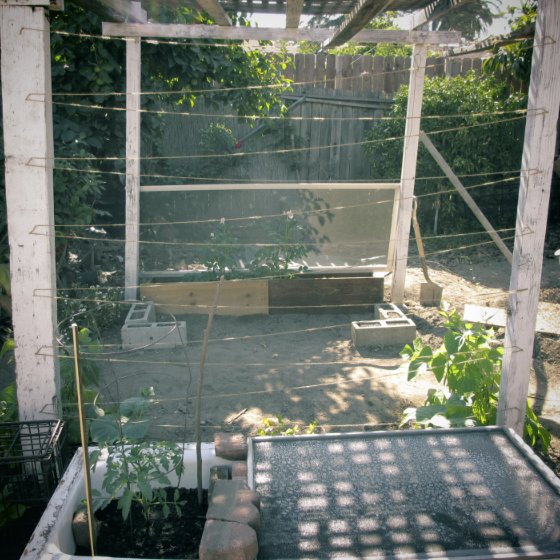My mom came for a short visit today, minutes after she arrived I found her in my yard chasing Figeater Beetles from the fig tree with a toilet bowl cleaner, who would think a toilet bowl cleaner would actually work {though I probably wouldn't recommend anyone else trying this method}, all I had to say was "Thanks Mom, I didn't have the guts to do it but apparently the crunching of these huge insects don't bother you- you've got balls." What I thought was just one Figeater Beetle getting comfortable in my fig tree actually turned out to be many- ick, I'll definitely have to invite Mom over more often.
The nuisance as of late that I've been having with the Figeater Beetles has led me to believe that yes, Today's Lesson should cover the Figeater Beetle which apparently is mistaken quite easily for the Green June Bug and the Japanese Beetles. A lot of the information I read about this green jewel of an insect seems to say that the Figeater Beetle is not as destructive as the Japanese Beetle which tend to eat all the foliage and soft fleshy fruit, instead the figeater beetle tend to stick with eating soft fleshy fruit< in my opinion this is a matter of perspective, if you've got many soft-flesh fruiting trees than the Figeater Beetle will be quite a nuisance to you opposed to those who have only a couple soft-flesh fruiting trees or none at all. In my yard the figeater will most definitely be a problem as I have no less than five soft-flesh fruiting trees.
'Adult figeater beetles grow to approximately 1.25 inches. They are dull green on the top and a brilliant iridescent green on the underside and legs. They are active during daylight hours, often congregating in the shade of trees near choice breeding grounds to find mates. They makes a loud buzzing sound similar to that of carpenter bees.' -Wiki
Whilst digging around in the soil of my tomato bed, where tomato seedlings used to stand before they were violently taken to their deaths by some mysterious rodent or some other, I found in the soil a larvae that looked very much like the ones above. I didn't know what it was and tossed it aside onto the ground but it looked very much like a figeater beetle (as shown above) and now feel pretty confident that that is what it was.
'Pupation occurs in the spring and adult figeater beetles emerge from July-September. After mating, eggs are laid in decaying matter or compost piles, which provide sustenance for the larvae when they emerge.' -Wiki
The figeater Beetle are large round and quite heavy for their wings it seems they bumble around quite clumsily, I'd often find them falling from the fig tree but they seem to be pretty hardy physically and none of the falls I've witnessed seem to do them any harm. As it so seems {and also from what I've read around} the Figeater Beetles are quite harmless and can even be picked by hand, so... if you've got the nuts that I haven't, go for it.
SUGGESTED METHOD FOR TERMINATION:
Pick the beetles by hand and squash them underfoot
*Read the full article on
Wikipedia, Figeater Beetle































